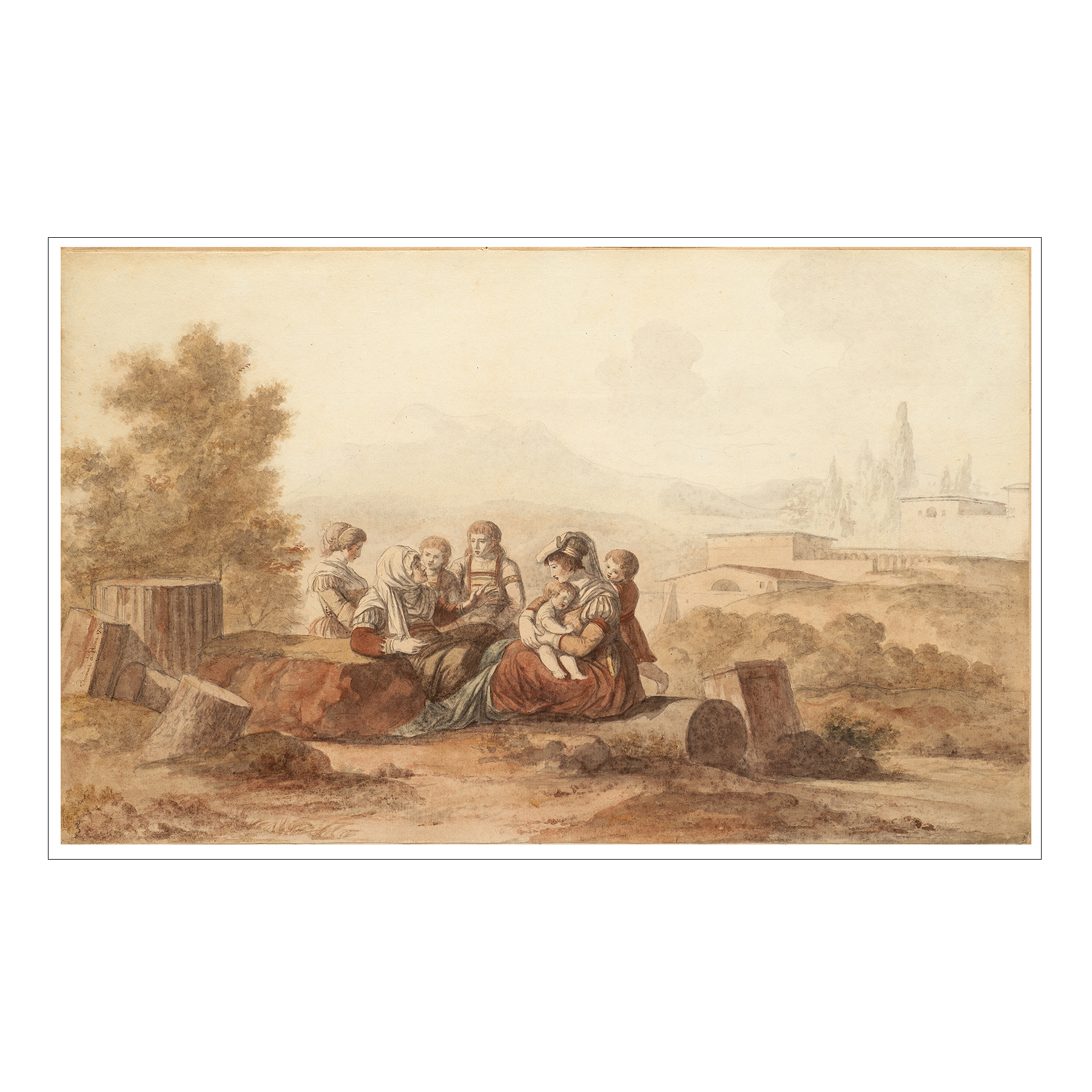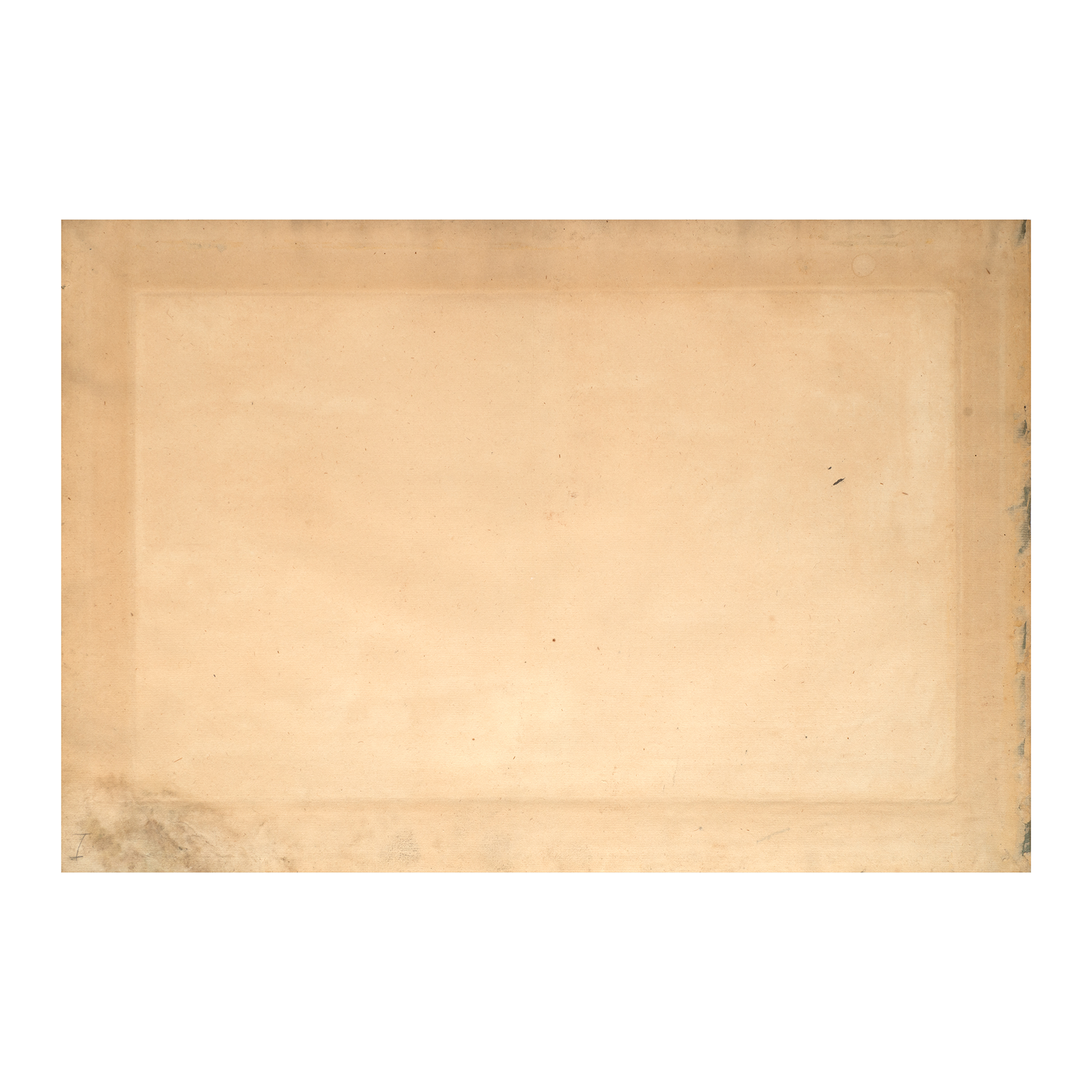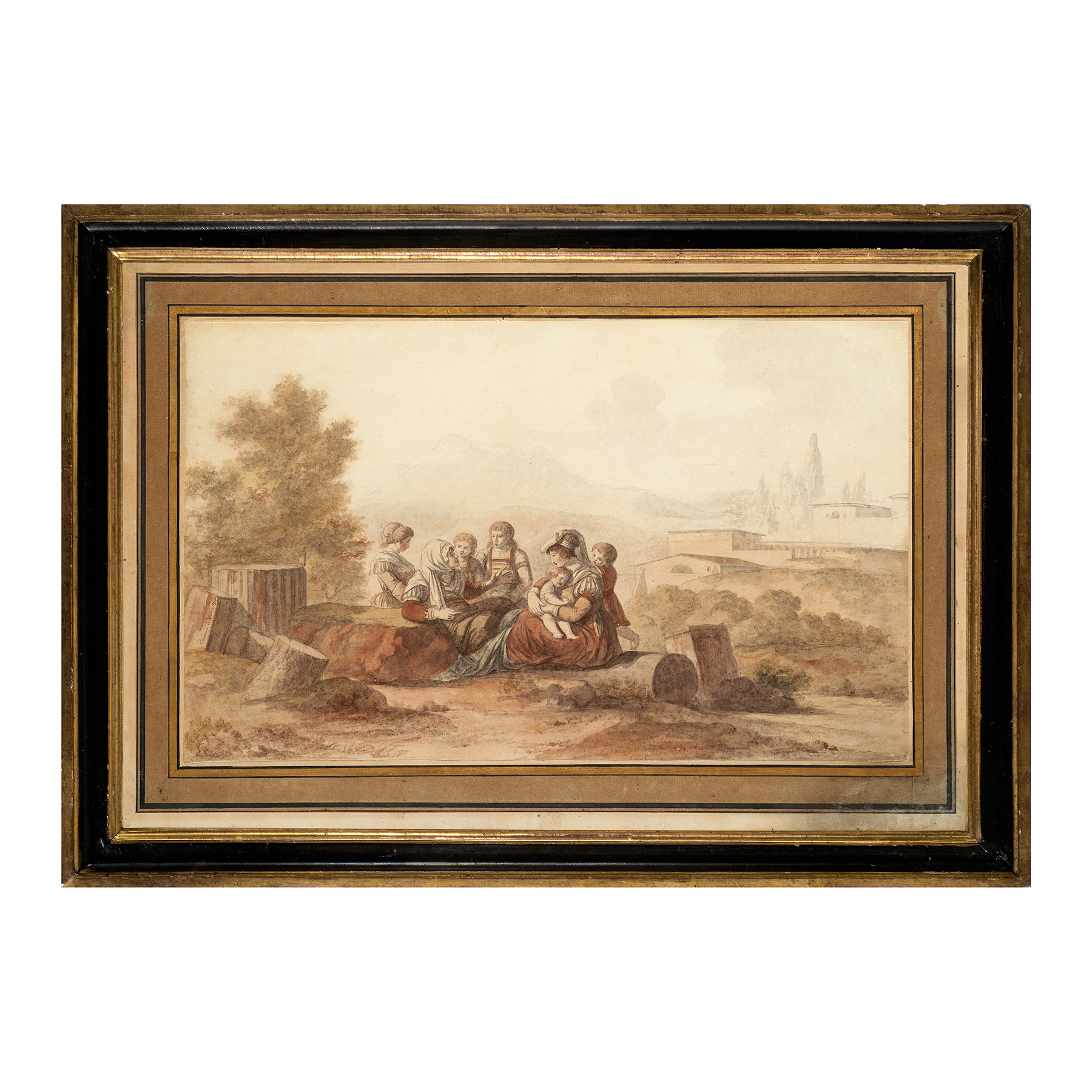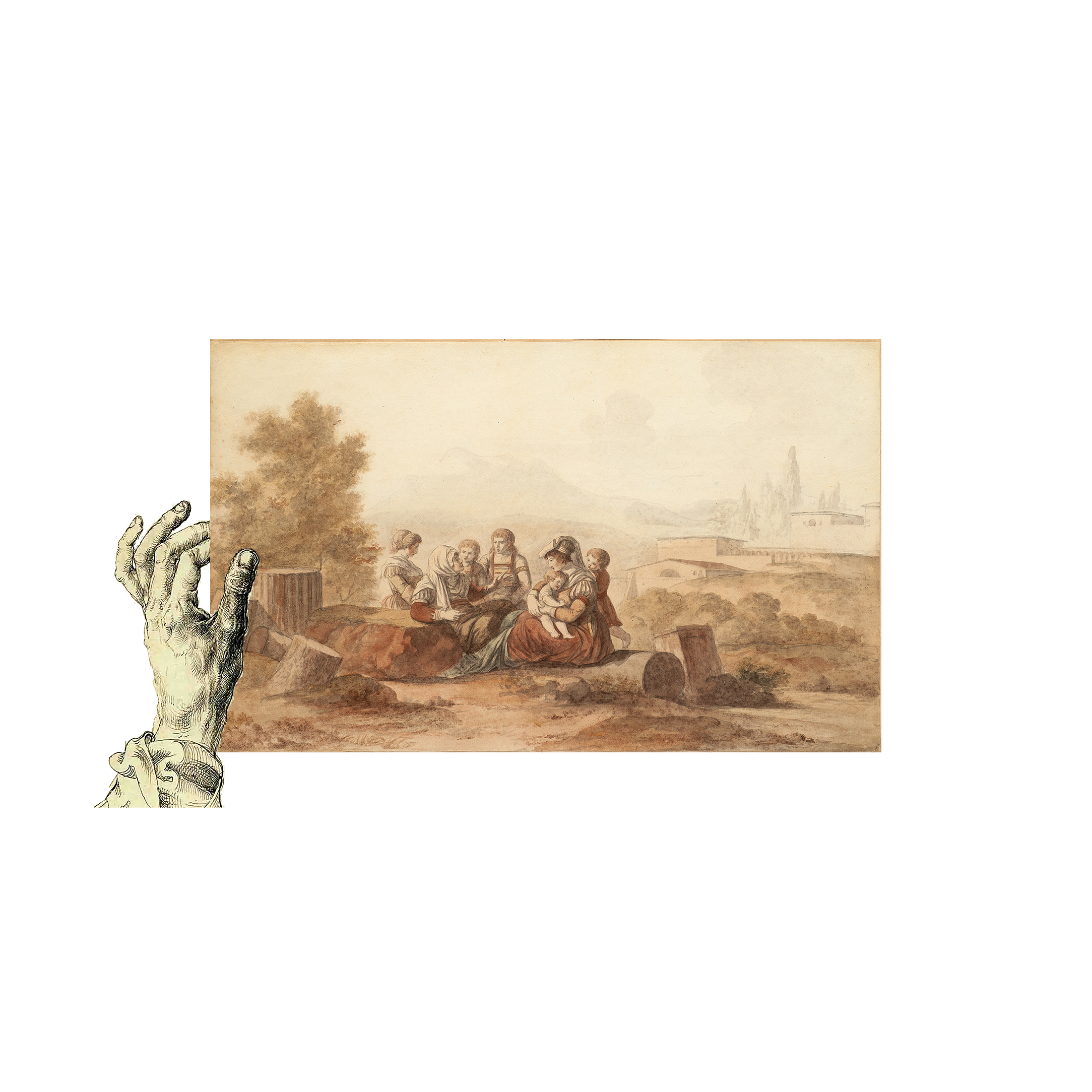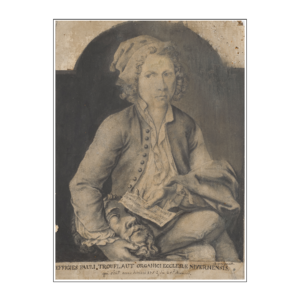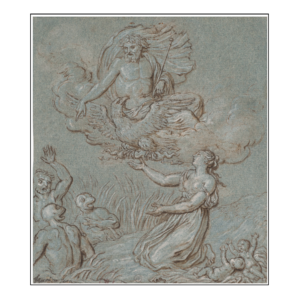Jean-François Thomas, dit Thomas de Thomon
Berne 1760 – Saint-Pétersbourg 1813
Women and Children in Roman Campagna
Pen and ink, grey wash, watercolour. Signed and dated on the left-hand side, vertically, Thomas à Rome 1790.
287 x 472 mm – 11 5/16 x 18 9/16 in.
A French neoclassical architect, Thomas de Thomon was the pupil of Julien David le Roy, in whose classes he rubbed shoulders with Charles Percier and Pierre François Leonard Fontaine. Although he failed to win the Academy grand prize, he went to Rome at his own expenses in 1785. There, he was able to take the classes of the French Academy in Rome, and benefited from the support of its director François Guillaume Ménageot and eminent personalities such as the Cardinal de Bernis. In both his articles on Thomas de Thomon (« Un architecte français en Russie à l’aube du XIXe siècle », Revue des études slaves, t. LVII, fasc. 4, 1985, and « Formation artistique et première étape de la carrière de l’architecte Jean-François Thomas, dit de Thomon », Bulletin de la Société de l’histoire de l’art français, année 1986, Paris 1988), Boris Lossky invalidated the idea, spread by Thomas de Thomon himself and often repeated in his biographies, that he went back to Paris in 1789 and worked for the Comte d’Artois before fleeing French Revolution. Still mentioned in Rome in July 1789 in Ménageot’s letters, the artist seems to have rather emigrated directly from Rome, passing by Venice, then Austria and Poland, before settling permanently in Russia. There, he designed and built the Old Saint Petersburg Stock Exchange and Rostral Columns and the Odessa Theatre (destroyed in 1873), among other things. The present drawing, signed, dated and located Thomas a Rome 1790, confirms that Thomas de Thomon was still in Rome in 1790, at least at the beginning of the year.
Thomas de Thomon executed many views and architectural capricci in order to make a living during his sojourn in Rome, “where he had no other resource than his work”, according to Ménageot (24 June 1789, letter to the director general of the Bâtiments du Roi, the Comte d’Angiviller, Correspondance des directeurs de France à Rome, volume 15, p.22) and during his exile towards Russia. He also frequently offered drawings to his patrons, as evidenced for example by a landscape drawing bearing an inscription “à son Excellence Mme la comtesse Golovin” (Christie’s London 26 November 1973).
